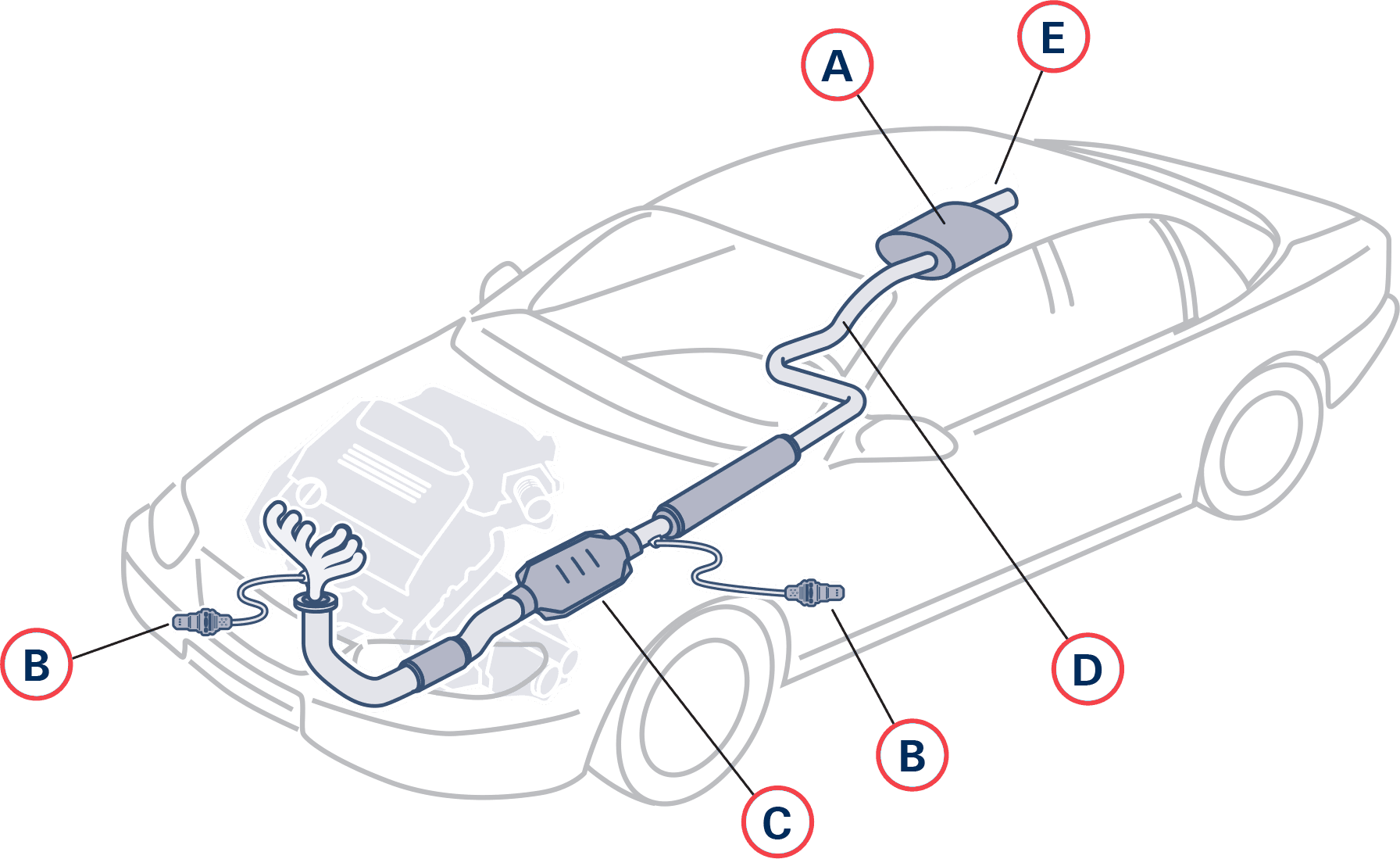Exhaust System Check
no charge
Book AppointmentExhaust systems have come a long way from the old days of exhaust pipes and mufflers. Today, the exhaust system is safety and emissions control rolled into one. Have the system inspected for leaks, damage and broken supports or hangers. Exhaust leaks can be dangerous and must be corrected without delay.

 Muffler
Muffler
Request Quote
As its name suggests, the muffler acts as a silencer to the extremely loud noises of combustion occurring throughout the exhaust system. The combustion sound waves travel through the system until they reach the muffler, usually connected to the tailpipe of a car. The muffler is a metal box containing a series of tubes called baffles, some perforated, that the waves must travel though, losing energy along the way and thus becoming quieter. At the back of the muffler is the resonator, which, through built up pressure cancels out the sound waves
 Oxygen Sensors
Oxygen Sensors
Request Quote
An oxygen sensor monitors the amount of oxygen (O2) in the exhaust gas. The amount of oxygen in the exhaust gas is a good indicator of engine combustion efficiency and is also the best place to monitor the air to fuel ratio.
Too much oxygen in the exhaust gases indicates a lean mixture. A lean mixture tends to produce more nitrogen oxide pollutants NOx, and in some cases it can cause poor performance including misfire and even engine damage with the engine running too hot. Too little oxygen indicates a rich mixture, which wastes fuel and reduces economy, and the unburned fuel results in excess emissions. Either condition can shorten the life of the expensive catalytic converter.
 Catalytic Converter
Catalytic Converter
Request Quote
Carbon monoxide is a poison for any air-breathing animal. Nitrogen oxides lead to smog and acid rain, and hydrocarbons produce smog. In a catalytic converter, the catalyst (in the form of platinum and palladium) is coated onto a ceramic honeycomb or ceramic beads that are housed in a muffler-like package attached to the exhaust pipe. The catalyst helps to convert carbon monoxide into carbon dioxide. It converts the hydrocarbons into carbon dioxide and water. It also converts the nitrogen oxides back into nitrogen and oxygen.
 Exhaust Pipe
Exhaust Pipe
Request Quote
These pipes carry exhaust through the entire system. They connect to the manifold at the start and end with the tailpipe where exhaust makes its final exit outside the vehicle.
 Tail Pipe
Tail Pipe
Request Quote
The starter motor on your car is responsible for turning the engine over initially, and starting the process of pulling air into the engine for combustion. The starter extends a rod with a pinion gear attached, which connects with the flywheel or flex plate on the crankshaft. When the starter turns, the engine turns over.

